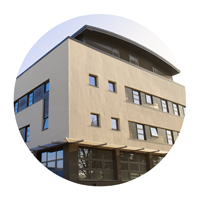Freedom of Information Request: FOI 0392
University Hospitals Birmingham NHS Foundation Trust (UHB) completed a merger by acquisition of Heart of England NHS Foundation Trust (HEFT) on 1st April 2018. UHB includes Birmingham Heartlands Hospital, the Queen Elizabeth Hospital Birmingham, Solihull Hospital and Community Services, Good Hope Hospital in Sutton Coldfield and Birmingham Chest Clinic.
Due to historical differences in data collection/reporting across UHB and the former Heart of England NHS Foundation Trust some responses have been provided by hospital site.
Queen Elizabeth Hospital
Requested Information
| Question 1 |
| Of those with facial nerve palsy who have not made a full or nearly full recovery at 12 weeks following onset, can you provide an estimate of the percentage of such patients who are referred for rehabilitation of persistent facial pain/discomfort and dysfunction?
|
| Answer |
| If these patients attend Emergency Department, then all are sent for follow up facial rehabilitation via ENT or neurology HOT clinics. |
| Question 2 |
| If a patient with facial nerve palsy is routinely referred to secondary care for rehabilitation therapy, which hospital(s) and department(s) do you refer to?
|
| Answer |
| We don’t refer onto secondary care unless we are aware of specialist/ experienced practitioner in facial rehabilitation in that area. We use the members list from Facial Therapy Specialists-UK to identify appropriate therapists. ( data held by FTS-UK complies with updated guidelines issued in 2018 |
| Question 3 |
| If routinely referring a patient with facial nerve palsy for therapy, do you refer to a specialist facial therapist or to a local general physiotherapy team?
a. Do you have specific centres that you refer to? If so please indicate which ones. b. What is the average cost of a course of physical rehabilitation therapy?
|
| Answer |
| Always to a specialist facial therapist
Costs: 1 np to 8 follow up appointments |
| Question 4 |
| Does the decision making panel for individual funding requests differentiate between referral to a specialist facial therapist (i.e. with a postgraduate qualification) and a general physiotherapist or speech and language therapist?
|
| Answer |
| Unaware of the answer to this question,
IFR that we receive are for specialist rehabilitation – it does not denote grade of staff |
| Question 5 |
| Is specialist physiotherapy or facial therapy freely available to patients with facial nerve palsy or is it funded on an individual basis?
a. If not routinely funded, what is the reason?
|
| Answer |
| Freely available within area, IFR outside of the west midlands |
| Question 6 |
| How many individual funding requests have you received to access specialist physiotherapy or facial therapy in the last 12 months?
a. How many were agreed? b. How many were declined? c. If declined, on what basis were they declined?
|
| Answer |
| a.~40
b. none c. N/A |
| Question 7 |
| Is Trophic Electrical Stimulation (TES) freely available to patients with facial nerve palsy or is it funded on an individual basis?
a. If routinely available, where do you refer patients to for TES? b. What evidence do you use to support routine funding of TES? c. If routinely available, what is the average cost of a course of TES?
|
| Answer |
| a. Not available due to lack of evidence to support its use and its potential risk to patients of enhanced sequelae of facial palsy
b. No evidence systematic review of TES published in 2017 identified any evidence to support its use and its potential risks to patients. “Effectiveness of electrical stimulation for rehabilitation of facial nerve paralysis”. Katie A Fargher & Susan E Coulson To cite this article: Katie A Fargher & Susan E Coulson (2017) Effectiveness of electrical stimulation for rehabilitation of facial nerve paralysis, Physical Therapy Reviews, 22:3-4, 169-176, DOI: 10.1080/10833196.2017.1368967 To link to this article: https://doi.org/10.1080/10833196.2017.1368967 |
Heartlands, Good Hope and Solihull Hospital
| Question 1 |
| Of those with facial nerve palsy who have not made a full or nearly full recovery at 12 weeks following onset, can you provide an estimate of the percentage of such patients who are referred for rehabilitation of persistent facial pain/discomfort and dysfunction?
|
| Answer |
| We hardly see facial palsy patients –probably 3-4 a year if that. |
| Question 2 |
| If a patient with facial nerve palsy is routinely referred to secondary care for rehabilitation therapy, which hospital(s) and department(s) do you refer to?
|
| Answer |
| We would anticipate that they would be referred to Physiotherapy |
| Question 3 |
| If routinely referring a patient with facial nerve palsy for therapy, do you refer to a specialist facial therapist or to a local general physiotherapy team?
a. Do you have specific centres that you refer to? If so please indicate which ones. b. What is the average cost of a course of physical rehabilitation therapy?
|
| Answer |
| A Neurological Physiotherapist who can complete facial nerve stimulation and provide exercises
Cost of treatment – routine Physio tariff probably 4 treatments and if nerve stimulation required the patient would hire a machine so no cost to the department. Hiring required for quite a long time due to the rate of recovery of the nerve The patients are referred to GHH neuro-physiotherapy; The number of treatment sessions varies depending on the severity of the symptoms but typically a course consists of 4-8 treatments. Sally Glover is a specialist facial therapist at QE and should receive referrals for moderate and severe facial palsy following trauma. |
| Question 4 |
| Does the decision making panel for individual funding requests differentiate between referral to a specialist facial therapist (i.e. with a postgraduate qualification) and a general physiotherapist or speech and language therapist?
|
| Answer |
| Not applicable as there are no IFR’s required for the Physiotherapy intervention |
| Question 5 |
| Is specialist physiotherapy or facial therapy freely available to patients with facial nerve palsy or is it funded on an individual basis?
a. If not routinely funded, what is the reason?
|
| Answer |
| Not applicable as there are no IFR’s required for the Physiotherapy intervention |
| Question 6 |
| How many individual funding requests have you received to access specialist physiotherapy or facial therapy in the last 12 months?
a. How many were agreed? b. How many were declined? c. If declined, on what basis were they declined?
|
| Answer |
| Not applicable as there are no IFR’s required for the Physiotherapy intervention |
| Question 7 |
| Is Trophic Electrical Stimulation (TES) freely available to patients with facial nerve palsy or is it funded on an individual basis?
a. If routinely available, where do you refer patients to for TES? b. What evidence do you use to support routine funding of TES? c. If routinely available, what is the average cost of a course of TES?
|
| Answer |
| Not applicable as there are no IFR’s required for the Physiotherapy intervention |






